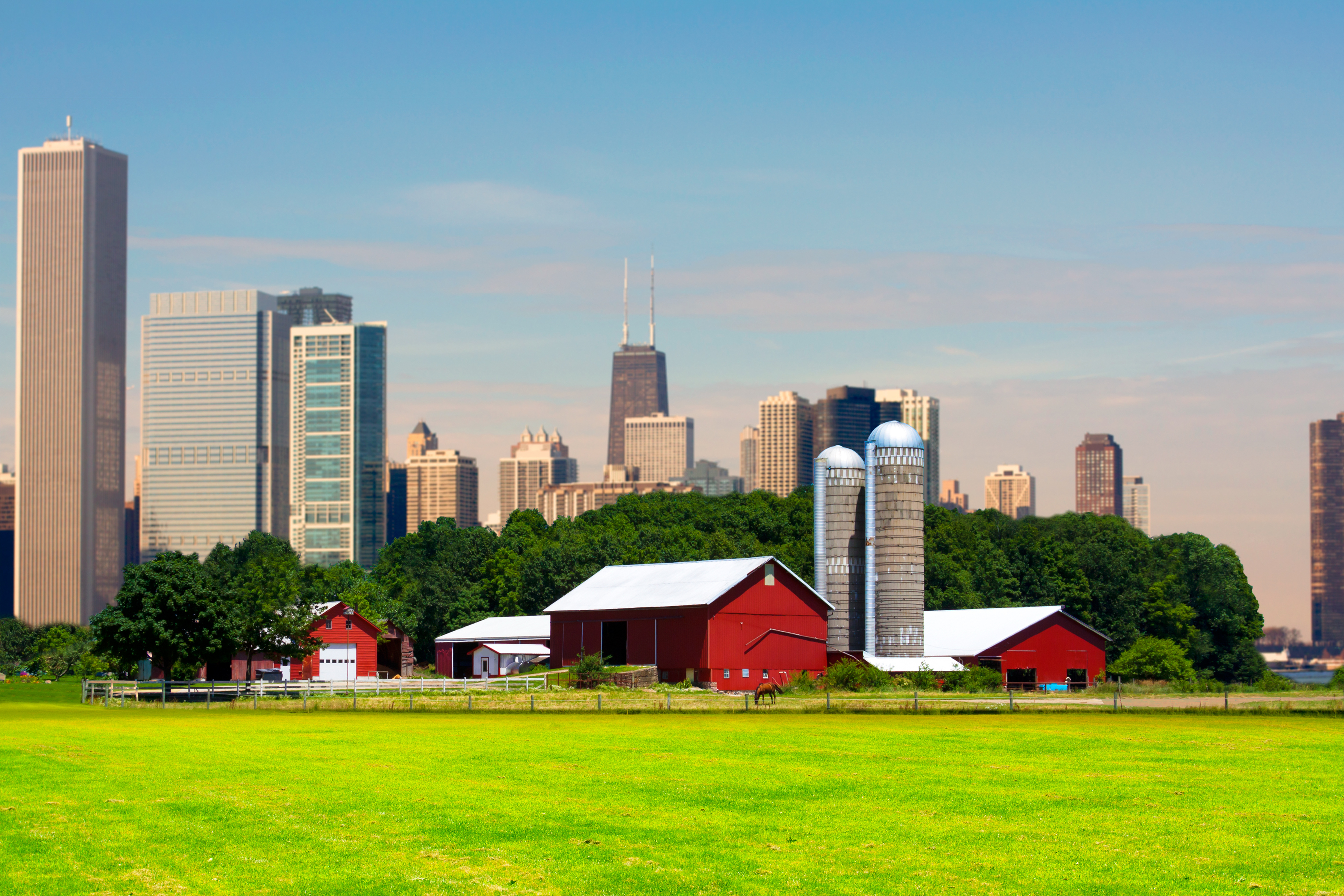A Division Among Neighbours
A look back at the 2017 controversy surrounding the decision to remove Abbotsford farm land from the Agricultural Land Reserve. We will be watching for the decision by the Provincial Agricultural Land Commission.
Ronda Payne
“The City in the Country” is Abbotsford’s moniker. And opponents to the municipality’s application to remove 201 hectares from the Agricultural Land Reserve (ALR) feel Abbotsford’s council is taking the country out of the city by planning to turn ALR land into industrial land. It’s a situation pitting neighbour against neighbour.
The final say is in the hands of the Agricultural Land Commission (ALC), as the city—which has 75 per cent of its land base in the ALR—has now submitted the exclusion application to the ALC.
Abbotsford Mayor, Henry Braun, feels the decision is right for the community and has had many locals tell him so.
“We’ve consulted through the open houses and the hearing process. Every [property] owner [in the subject areas] was invited. I’m not aware of anyone who didn’t have their say,” Braun says. “Some sent in comment cards. Some just said verbally, ‘I’m supportive of this, but I’m not going to a mic so people know who I am and I have to continue to live next to them.’ I wish it wasn’t that way. We [mayor and council] know [those individuals support the exclusion] but the public doesn’t.”
The public, however, didn’t make the call on which lands the city submitted to the ALR for exclusion. Jillian Robbins, one of the directors of BC Young Farmers, and farmer with K&M Farms, sees this as part of the problem. Her family’s farm is in one of the two study areas now before the ALC.
“So, 92.3 per cent voted against the exclusion in Bradner and they [the city] made the decision [to proceed with the application],” she says. “I don’t know when that decision was made.”
At issue are two sections on the west side of Abbotsford. Study Area A, referred to by some as being in the Bradner area, is 134 hectares, positioned east of Gloucester Industrial Estates. Study Area B is 67 acres, located north of the Abbotsford Airport. Braun states the community needs to convert these lands to industrial designation in order to attract more jobs to the community, to increase employment for the anticipated population growth of 200,000 more residents.
He is surprised at the amount of opposition for Area A (where he says 30 to 35 per cent of the lands are being farmed) over Area B, because the soil in Area B is superior.
“Study Area A has mostly class three and class four [soils], yet Study Area B has mostly class one and two,” says Braun. “The lands we’re actually taking out [for Area A], three quarters are not being farmed. It’s less than half a per cent of our ALR lands.”
Yet, for the public participating in the two open houses and the municipal hearing, it’s easy to see why those like Robbins are puzzled by the decision to proceed with the application.
“They told us the results of the survey and then the mic opened up,” says Robbins of the hearing. “They are actively going against what their people are saying. To tell me that someone is going to move to Abbotsford for an industrial job is a little far-fetched.”
Braun, however, notes there is more to the story than survey results.
“Yes, 92 per cent of those who did the survey were opposed,” he says, stressing that others may not have provided feedback, didn’t attend meetings or made their preference known in other ways due to fears of what others think. He insists Abbotsford council believes in saving farmland.
“Do we have enough serviced employment lands? The answer is we don’t,” says Braun. “So we looked at where is the least productive land. This council wants to preserve our agricultural lands, because we have the best ag land in Canada in Matsqui Prairie and Sumas Prairie.”
He says council accepted that no matter what they chose, someone would be opposed to the decision.
With industrial lands in Abbotsford nearly at maximum capacity (a vacancy rate of .04 per cent) businesses are moving to other regions. Costco looked to the community for their distribution warehouse yet chose Alberta due to lack of suitable space, while Molson Coors chose Chilliwack. Jobs that could have supported Abbotsford families are lost without the necessary plot sizes, Braun notes.
Of the vacant industrial land (86 hectares—which Braun agrees sounds like a significant amount) the majority is made up of small parcels of less than one hectare on average, unsuitable for many operations.
According to Robbins, this available land is from Abbotsford’s ALR exclusion granted in 2005, of approximately 450 acres.
“90 per cent of them [lands excluded in 2005] are chain-linked gravel lots for truck or RV parking,” she says. “I’ve driven [around] them. If you look at what they took out in ’05 there’s maybe ten jobs.”
She points to the potential of jobs in agriculture rather than industrial, stating that agriculture makes up one-third of Abbotsford’s GDP. The city however feels large lots of industrial land are necessary.
We thought long and hard about this. We recognize there are people not happy with us on both sides of the fence,” Braun notes. “We don’t like to ask to take anything else out of the ALR, but there’s nowhere else to go. Anywhere else we were to go in the ALR would be better land than here.”
Robbins would like to see the city use industrial lands more efficiently, similar to how residential lands have been forced to densify.
“Industrial is traditionally not very efficient with their land,” she explains. “Farmers are very efficient with their farmland and Abbotsford has made a commitment to have all residential be densified now—farmers are densifying because we have to. If you’re asking every other sector in your community to densify, why are you not asking the same of industrial?”
She can’t see how the lands requested for exclusion can create 60,000 jobs. She found the number—an estimate of potential jobs created by the original exclusion plan of 283 hectares—on publicly-available city documents. When she spoke to two city employees in mid-July, they couldn’t identify how the number was established.
“Their own industrial land strategy says that certain lots, about X size, will create 60,000 jobs,” she explains. “Neither [city employee she spoke to] could answer where the number came from.”
Removal of Study Area B makes sense to some, especially with the deletion of an eastern section from the original area, cutting the region from 139 hectares to 67 hectares, prior to submission to the ALC. This was done to preserve some of the class one and two soils, according to Braun.
“I’ve had two meetings with [farmers in Study Area B]. It is surrounded on three sides by industrial,” Braun says. “There is 54 per cent support from Study Area B [for the exclusion].”
Robbins combats this by noting some farmers vote for the exclusion because of the financial benefits of selling their land. Some see that as a greater benefit, but Robbins stresses that farmers need land.
“For young farmers, access to farmland in the future is key,” she says. “Current seasoned farmers also need access to farmland for expansion.”
Abbotsford resident Nancy Teichgraf, who attended a mid-May open house, sees the benefit of Study Area B.
“I’m for our wonderful raspberry capital of Canada. I’m all for business. But we are the city in the country,” she says. “I do find the development of site B is perfect—only a few raspberry fields [will be lost].”
Study Area A only makes sense due to the proximity to the Gloucester region, its rail line and easy access to Highway 1, according to Braun.
Robbins believes the application for exclusions has been rushed through, but Braun disagrees, noting the review of the lands for industrial needs began in 2004 with the previous exclusion that he says has now reached capacity.
Braun summarizes that the ALC has more information with this application than they did in 2004 with the previous application. This includes facts on the economy and soils.
“It is now out of our hands, we’ve done our work,” he says. “It was extensive and exhaustive.”












